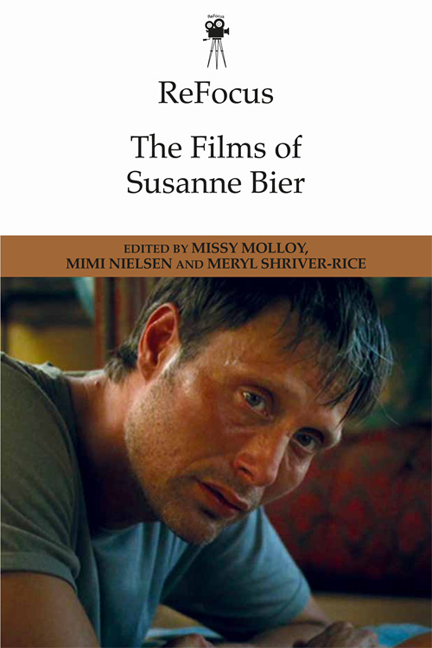Book contents
- Frontmatter
- Contents
- List of Figures
- Notes on Contributors
- Foreword
- Introduction: Susanne Bier's Boundary-Crossing Screen Authorship
- Part 1 Generic and Industrial Fluidity
- Part 2 Negotiating Identity
- Part 3 Authorship and Aesthetics
- Part 4 Transnational Reach
- Postscript: A Conversation with Susanne Bier
- Filmography of Susanne Bier
- Acknowledgments
- Index
Part 4 - Introduction
Published online by Cambridge University Press: 01 May 2021
- Frontmatter
- Contents
- List of Figures
- Notes on Contributors
- Foreword
- Introduction: Susanne Bier's Boundary-Crossing Screen Authorship
- Part 1 Generic and Industrial Fluidity
- Part 2 Negotiating Identity
- Part 3 Authorship and Aesthetics
- Part 4 Transnational Reach
- Postscript: A Conversation with Susanne Bier
- Filmography of Susanne Bier
- Acknowledgments
- Index
Summary
The fourth and final part of this collection features the global nature and transnational reach of Bier's film practices and reception. The transnational nature of Bier's work has been highlighted and discussed at length in many of the chapters of this book as one of the most definitive elements of her oeuvre. In this final part, Bier's transnational reach is examined by Belinda Smaill, Cath Moore, and Meryl Shriver-Rice using three different approaches.
In Chapter 11 Smaill employs a feminist lens to situate women filmmakers within a wider global context in which all women's cinema can be considered to be “world cinema,” set apart from local contexts that fail to encompass women's film practices in terms of resources, space, and mobility. Advocating a perspective advanced by Patricia White in Women's Cinema, World Cinema, Smaill proposes that women filmmakers should be viewed within “whole world approaches” that comprehensively address the context of production, circulation, representation, and image of each director. This chapter first looks at Bier's specific national and transnational production milieus as they relate to her films’ representations of the world, before situating her films and directorial agency against the industrial strategies and films of other significant women directors, including Claire Denis, Katheryn Bigelow, and Jane Campion. While tracking the mobility of female directors, Smaill points out that while it is difficult for women to achieve employment as feature directors in the U.S., it is even more difficult to gain access to the industry from outside the U.S. Hollywood is an exclusive domain, making Bier's transnational American work a critical site for investigation. Thus, Smaill takes a closer look at Serena to investigate the narrative and aesthetic traditions that locate Bier's work in gendered paradigms of representation. As an example of world cinema that cuts across traditional film categories (such as art and commercial cinema, or auteur and mainstream film), there is an unresolved tension surrounding Serena's address to the audience, especially in the film's appeal to mainstream expectations. Serena, Smaill concludes, represents a complex manifestation of world cinema.
In Chapter 12 Cath Moore draws attention to the unique Danish co-writing process that most Danish directors employ, in which a director and screenwriter collaborate on scripts and share writing credit.
- Type
- Chapter
- Information
- ReFocus: The Films of Susanne Bier , pp. 207 - 210Publisher: Edinburgh University PressPrint publication year: 2018



